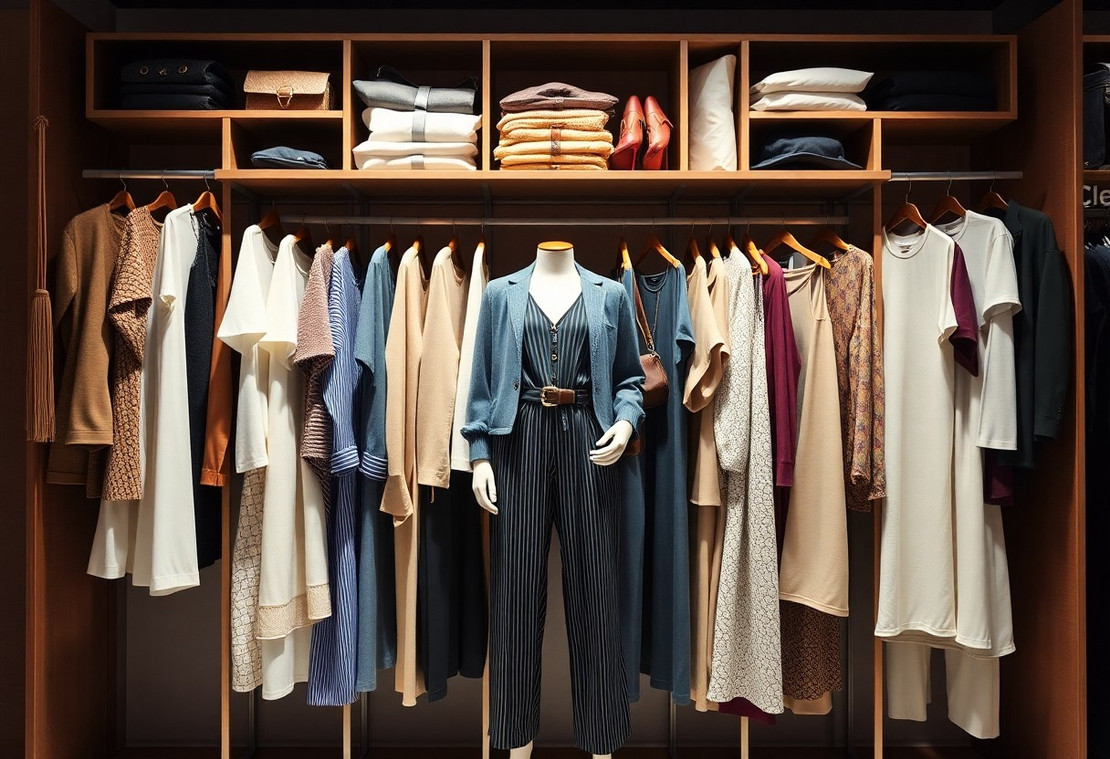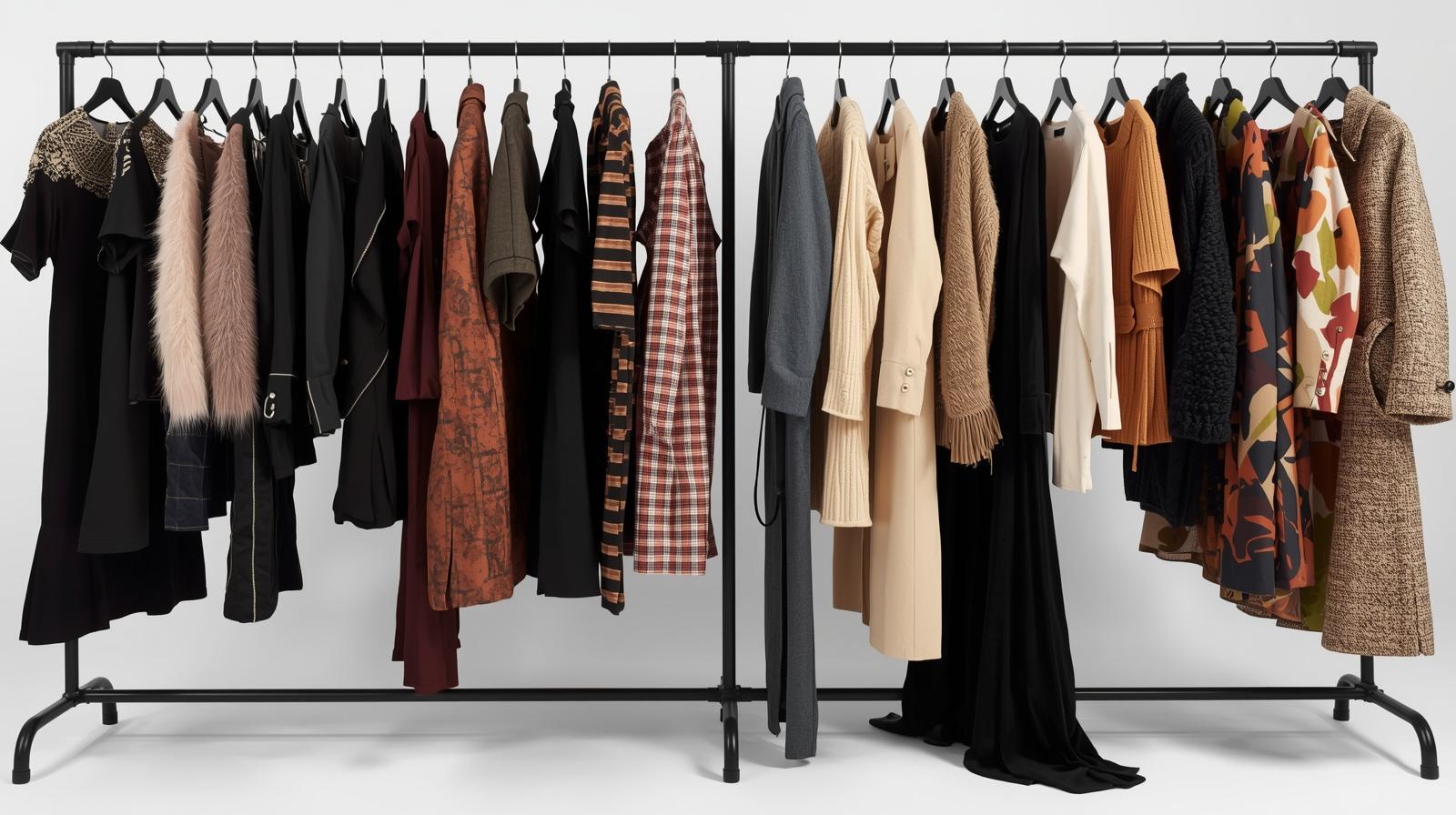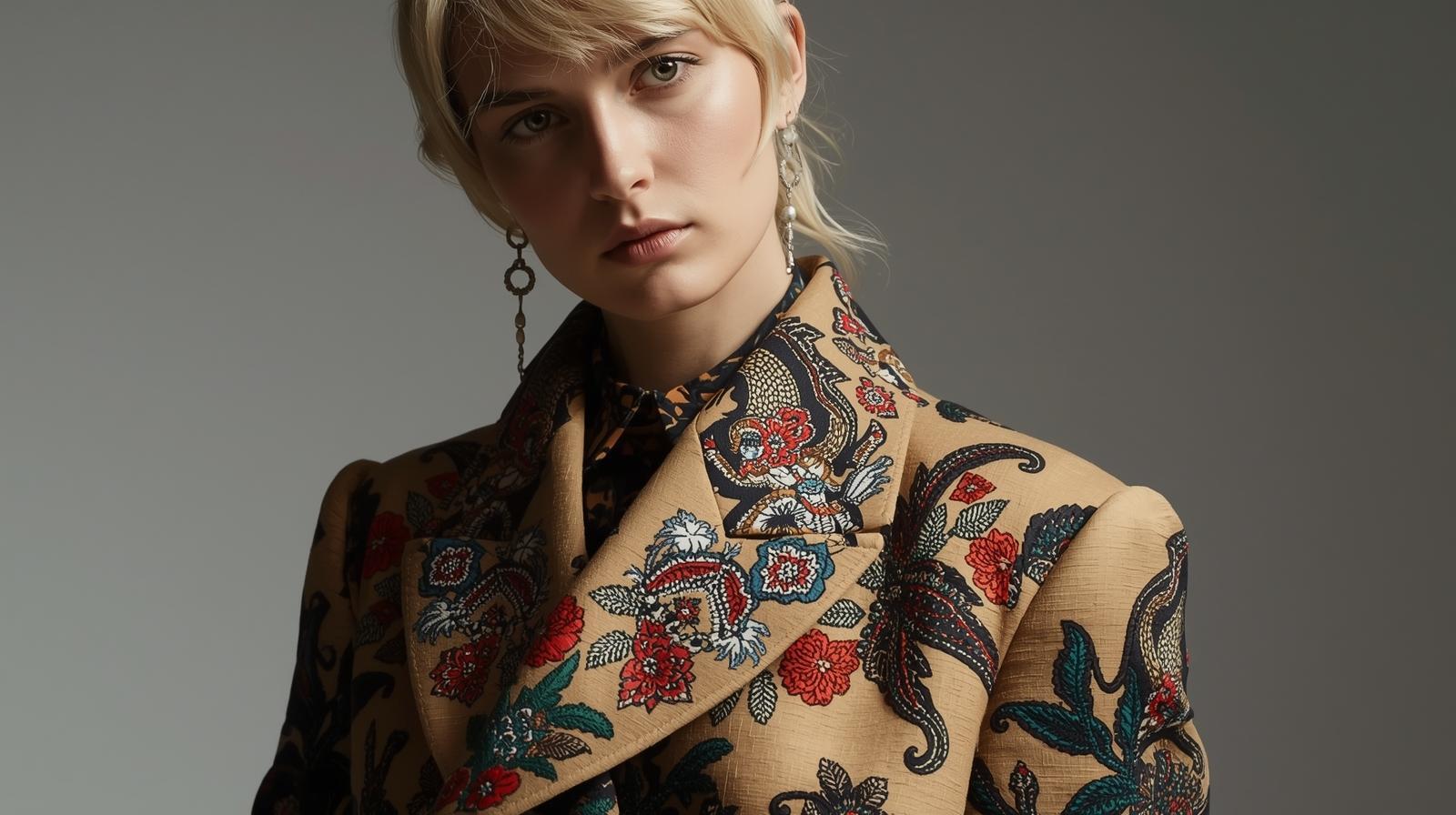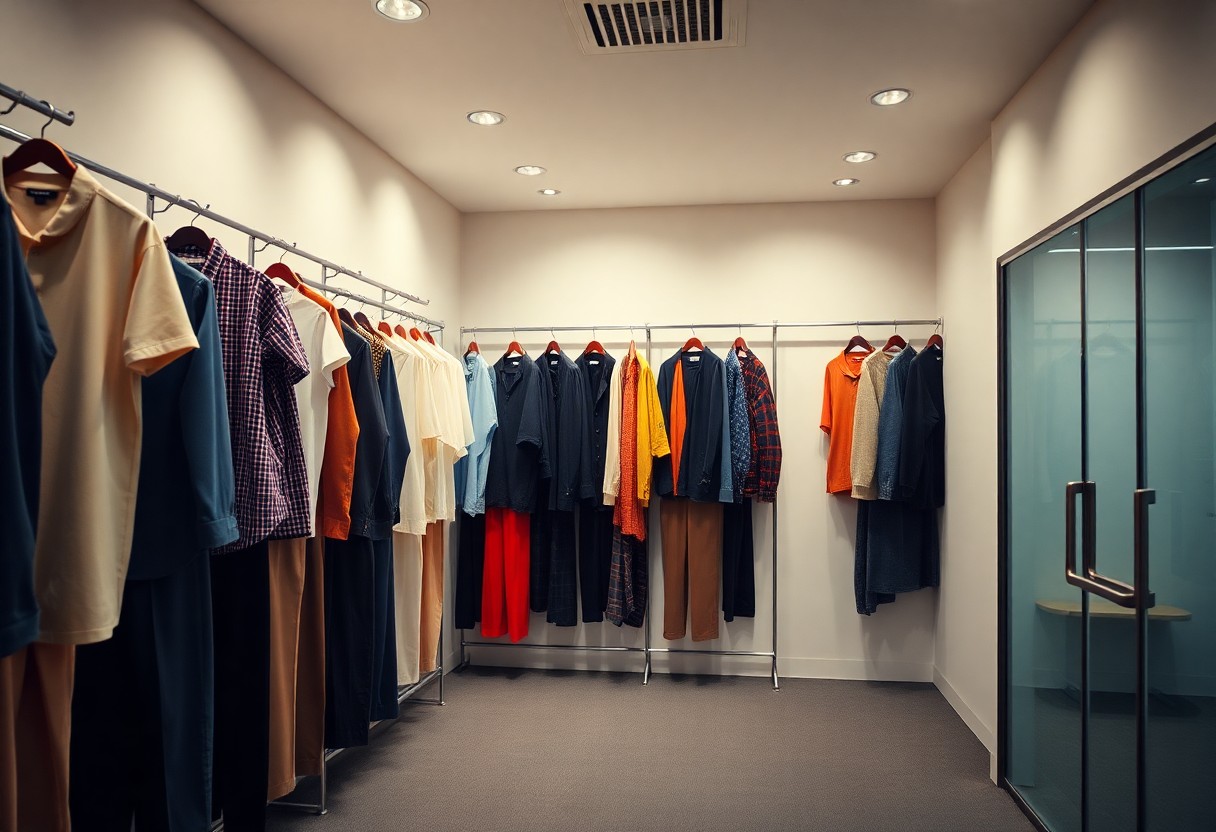6th Oct 2025
Modular Fashion - The Rise of Interchangeable Wardrobes

There's a growing trend in fashion that allows you to redefine your style effortlessly: modular fashion. This innovative approach enables you to mix and match elements of your wardrobe, creating versatile and personalized outfits that suit any occasion. You can maximize space and functionality while minimizing the environmental impact of fast fashion. Invest in pieces that complement each other, minimizing clutter and enhancing your style as you embrace this shift towards sustainability.
The Concept of Modular Fashion
Modular fashion represents a transformative shift in how you approach your wardrobe. By integrating interchangeable pieces, you can create a multitude of outfits from a limited selection, enhancing both versatility and sustainability. This innovative concept encourages personal expression while minimizing waste, making it a contemporary solution for modern fashion enthusiasts.
Definition and History
Modular fashion refers to clothing designed with interchangeable components that allow for customized combinations. This concept can be traced back to the 1960s when designers began exploring mix-and-match styles. Over the decades, modularity has evolved, gaining popularity for its practicality in today’s fast-paced, environmentally conscious world, seamlessly blending functionality with fashion.
Key Players in the Industry
Several brands have emerged as leaders in modular fashion, including Uniqlo, known for its versatile layering pieces, and MODULAR, a startup that specializes in customizable clothing systems. Additionally, major fashion houses like Chanel and Gucci are exploring modular collections, indicating a shift in mainstream fashion towards this innovative model.
Uniqlo’s innovative approach combines quality with affordability, featuring items that can be layered or styled together for various looks. Meanwhile, MODULAR’s subscription model enables you to easily refresh your wardrobe with new pieces while responsibly recycling your old ones. Other brands, like Nike with its customizable sneakers, further highlight the growing crossover between modularity and personal expression, appealing to consumers who prioritize sustainability and individuality in their fashion choices.
Benefits of Interchangeable Wardrobes
Interchangeable wardrobes offer a range of benefits that revolutionize how you approach fashion. Firstly, they allow for minimalistic packing, making travel easier and more efficient. You can create multiple outfits with just a few key pieces, ultimately saving time and space. This modularity simplifies your daily choices and permits endless creative combinations, ensuring you make the most of your clothing without compromising style.
Sustainability and Reduced Waste
Embracing interchangeable wardrobes significantly contributes to sustainability by reducing clothing waste. By opting for versatile, high-quality pieces, you can replace the fast fashion cycle with a more mindful approach. The ability to mix and match creates fewer items needed in your closet, ultimately leading to a smaller carbon footprint.

Versatility and Personalization
Interchangeable wardrobes offer unmatched versatility, allowing you to tailor your style to any occasion effortlessly. Each piece serves multiple purposes, adapting to various settings and moods. This dynamic approach enables you to express your individuality through unique outfits while minimizing the need for excessive clothing.
Versatility extends beyond individual pieces; it allows you to craft looks that reflect your evolving tastes. For instance, a simple dress can transition from casual brunch to an elegant evening outfit with the addition of accessories or layers. Personalization becomes second nature as you mix textures, colours, and styles to create outfits that resonate with your characters. With interchangeable wardrobes, you maintain a fresh, tailored appearance without the clutter of a traditional closet filled with seldom-worn items. Consider the shift from owning dozens of outfits to having a curated selection that can adapt to every aspect of your life, enhancing both your wardrobe and your daily experience.
Designing for Modularity
Creating modular clothing requires innovative thinking and a comprehensive understanding of design principles. Each piece must not only stand alone but also seamlessly integrate with others, allowing for flexibility in styling. Design elements such as connectors, zippers, and snaps are vital to facilitate easy interchangeability. Additionally, colour palettes and patterns should be carefully chosen to ensure versatility across different combinations.
Fabric Choices and Innovations
Your choices in fabric significantly impact the functionality of modular garments. Utilizing lightweight, durable materials allows for ease of movement and comfort. Innovative textiles, such as thermo-regulating fabrics and eco-friendly options, enhance the wearability of interchangeable pieces. Such advancements not only elevate the aesthetic but also ensure longevity and sustainability in your wardrobe.
Production Techniques and Technology
Advanced production techniques are transforming how modular fashion is created. Manufacturing processes utilize digital patterning and automated cutting machines, leading to precision and reduced waste. These innovations allow for smaller runs of clothing, promoting personalized designs tailored to your preferences while maximizing resource efficiency.
Incorporating state-of-the-art technologies, such as 3D knitting, eliminates sewing altogether, resulting in seamless garments that conform to your body shape. The industry is also leveraging computer-aided design (CAD) to develop intricate patterns that optimize the use of materials. These technologies pair with sustainable production practices, thereby reducing environmental impact and fostering an eco-conscious approach to fashion. Modular production, therefore, enhances your wardrobe's adaptability and prioritizes responsible manufacturing methods.
Consumer Trends and Preferences
As consumers become more environmentally conscious, demand for sustainable options reshapes their preferences. You seek versatility in your wardrobes, valuing pieces that offer various styling possibilities. The trend toward minimalism drives you to invest in high-quality, interchangeable items that maximize outfit potential and reduce waste, reflecting a desire for practicality without sacrificing style.

Market Demand for Modular Fashion
Recent surveys indicate a rapid increase in interest in modular clothing, with over 70% of consumers expressing a preference for garments that can be mixed and matched. A desire for sustainable fashion solutions, which enable you to optimize your wardrobe while minimizing your environmental footprint, drives this shift. As a result, brands are adapting to these demands by introducing customizable and interchangeable clothing lines.
Case Studies of Successful Brands
Several brands have successfully capitalized on the modular fashion trend, showcasing innovative designs and robust sales. For example, Uniqlo reported a 30% increase in sales from their line of interchangeable basics, while Modular Co. achieved a 50% reduction in returns by offering customizable options. These examples highlight the significant market viability and consumer demand for modular wardrobes.
- Uniqlo: 30% sales increase from interchangeable basics.
- Modular Co.: 50% reduction in returns due to custom options.
- Wearable Colours: 150% year-over-year growth in modular clothing sales.
- Assembly Label: Achieved 25% market penetration within one year with mix-and-match collections.
These brands illustrate the potential for growth within the modular fashion sector, leveraging consumer interest in sustainability and versatility. Uniqlo's impressive sales increase demonstrates the effectiveness of offering interchangeable basics, while Modular Co.’s reduction in returns highlights consumer satisfaction with customization. Wearable Colors' remarkable growth further emphasizes the market's appetite for engaging modular designs, showing that your preferences are shaping the industry landscape in powerful ways.
- Wearable Colours: 150% growth in modular clothing sales over one year.
- Assembly Label: 25% market penetration within a year with mix-and-match items.
- Stella McCartney: Launched multi-functional pieces, leading to increased brand loyalty among eco-conscious consumers.

Challenges in Modular Fashion
Despite its growing popularity, modular fashion faces significant challenges that could hinder widespread adoption. From consumer perceptions to economic barriers, these obstacles require careful consideration as the industry evolves.
Consumer Perception and Adoption
Many consumers still view modular fashion as unfamiliar and complex, leading to hesitance in embracing this innovative approach. Your initial thoughts may centre around uncertainty about how well interchangeable pieces truly work together, making it vital for brands to demonstrate seamless integration and style versatility.
Economic and Logistical Hurdles
The economics of modular fashion present obstacles that can deter brands and consumers alike. High production costs often translate to higher prices, steepening the barrier for entry. Additionally, the logistics of distribution and inventory management complicate the supply chain, making it challenging to scale effectively.
Consider that brands entering the modular market may face higher initial investment costs due to the need for advanced design technologies and production capacities. For instance, establishing a robust supply chain capable of efficiently handling customizable products requires significant time and resources. Furthermore, modular designs often necessitate a larger variety of materials and sizes, complicating stock management and increasing the risk of excess inventory. Retailers might also struggle to convey the value of modularity to consumers, which could stifle demand and affect overall profitability.
The Future of Fashion: A Modular Approach
Consumer preferences shifting towards sustainability and personalization will significantly evolve the modular fashion landscape. You can expect brands to adopt more interchangeable design elements that allow your wardrobe to adapt seamlessly to changing trends. This shift not only minimizes waste but also empowers you to express your style without committing to fast fashion's rigid structures.
Predictions and Upcoming Trends
Upcoming trends indicate a rise in modular clothing lines featuring customizable components that cater to diverse tastes and occasions. Brands are likely to introduce mix-and-match collections that allow you to create unique ensembles. This evolution aligns with a collective movement towards more sustainable practices, pushing for durable materials that enhance longevity and reduce environmental impact.
The Role of Technology and Innovation
Technology plays a pivotal role in the future of modular fashion, reshaping how you engage with and purchase clothing. Advanced design software facilitates the creation of customizable garments, while online platforms offer virtual try-ons, guiding you in making informed choices. 3D printing enables rapid prototyping and sustainable materials, revolutionizing traditional manufacturing processes and allowing for more efficient resource use.
Emerging technologies like artificial intelligence are transforming the way you shop for modular fashion. AI-driven platforms analyze your style profile to recommend interchangeable pieces tailored to your preferences. Additionally, blockchain technology ensures transparency in sourcing, helping you make ethical purchasing decisions. These innovations not only streamline the shopping experience but also enhance the sustainability of your wardrobe, making it easier to embrace modular fashion with confidence.
To wrap up
With these considerations, you can appreciate how modular fashion allows for personalized expression while maximizing the utility of your wardrobe. Interchangeable pieces offer flexibility, enabling you to adapt your style effortlessly to different occasions. As you embrace this innovative approach, you can curate a closet that reflects your individuality and aligns with sustainable practices, ultimately transforming how you perceive and engage with fashion.
